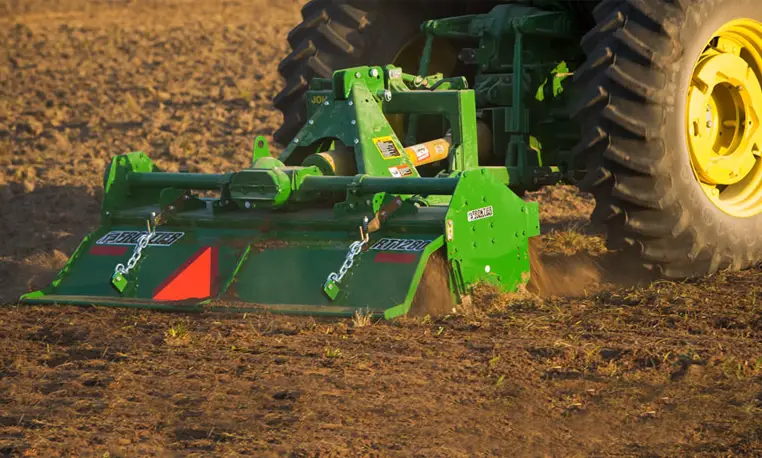This post may contain affiliate links which means I may receive a commission for purchases made through links. Learn more on my Private Policy page.
In this article, you will discover the essential best practices for effectively using a rotary tiller. Whether you are an experienced gardener or just starting out, understanding how to properly operate this powerful tool will enable you to achieve optimal results in your soil preparation. From selecting the right tiller for your specific needs to correct handling techniques, we will guide you through the key considerations for successful rotary tiller usage. So, let’s delve into the world of rotary tillers and ensure you have all the knowledge necessary to make the most of this valuable gardening tool.

This image is property of blog.machinefinder.com.
Choosing the right rotary tiller
When it comes to choosing the right rotary tiller for your garden, there are a few key factors to consider. The first thing to think about is the size of your garden. Rotary tillers come in different sizes, so it’s important to choose one that is appropriate for the size of your garden. A larger tiller may be too cumbersome for a small garden, while a smaller tiller may not have enough power for a larger garden.
Another important feature to look for in a rotary tiller is adjustable tine width. This allows you to customize the tiller to match the needs of your garden. If you have narrow rows or tight spaces, you can adjust the tine width to accommodate them. On the other hand, if you have wider rows, you can widen the tines for more efficient tilling.
Lastly, it’s important to evaluate the horsepower requirements of the rotary tiller. Different tillers have different horsepower ratings, and you want to make sure you choose one that has enough power to effectively till your soil. If you have rocky or compacted soil, you may need a tiller with more horsepower to break up the tough ground.
Preparing your garden
Before you start using your rotary tiller, it’s important to properly prepare your garden. The first step is to remove any debris from the area you plan to till. This includes rocks, sticks, and any other large objects that could potentially damage the tiller. Removing debris will not only protect your tiller, but also ensure a more even and efficient tilling process.
Once the debris is cleared, it’s a good idea to mark the boundaries of your garden. This will help you stay on track and ensure that you till the entire area evenly. You can use stakes or string to mark the boundaries, making it easy to follow as you till.
Before you start tilling, it’s also important to water the soil. Moist soil is easier to till and allows the tiller to work more effectively. If the soil is dry, it can be harder for the tines to break up the soil, resulting in a less thorough till. By watering the soil before you begin, you’ll ensure a smoother and more successful tilling process.
Safety precautions
When using a rotary tiller, it’s important to prioritize safety. One of the first safety measures to take is wearing appropriate protective gear. This includes gloves, safety goggles, and sturdy footwear. Gloves will protect your hands from blisters or injuries, while safety goggles will shield your eyes from flying debris. Sturdy footwear is essential for protecting your feet from potential accidents.
Before starting the tiller, always check for safety features. Most modern tillers are equipped with safety shields that prevent debris from being thrown back towards the operator. It’s important to make sure these shields are properly installed and in good condition before operating the tiller. Additionally, make sure any safety switches or levers are in the correct position before starting the tiller.
While operating the tiller, it’s crucial to keep pets and children away from the work area. Rotary tillers have sharp tines that can cause serious injury if not handled properly. To avoid accidents, it’s best to have a designated area where pets and children can stay safely away from the tiller.
Setting up the tiller
Before you begin using your rotary tiller, there are a few important steps to take to ensure it is properly set up. Start by adjusting the tine depth. This refers to how deep the tines will go into the soil. The ideal tine depth will depend on the type of soil you have and the depth of cultivation you desire. It’s best to start with a shallow tine depth and gradually increase it as needed.
Proper balance is also crucial for the smooth operation of the tiller. Make sure the tiller is properly balanced by adjusting the handlebars or adding additional weights if necessary. An unbalanced tiller can be difficult to control and may result in uneven tilling.
Before starting the tiller, always check the oil and fuel levels. These are essential for the proper functioning of the tiller. Make sure the oil is at the recommended level and the fuel tank is filled. If the tiller has been sitting unused for a while, it’s a good idea to replace the old fuel with fresh fuel to ensure optimal performance.
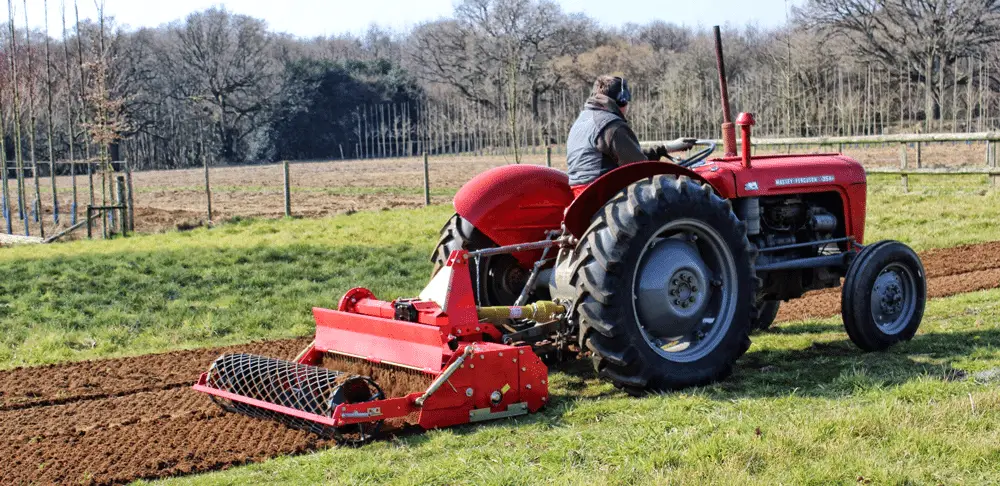
This image is property of farmtechsupplies.com.
Operating the rotary tiller
Operating a rotary tiller requires some technique and practice. When starting out, it’s best to begin with a small area. This will allow you to get familiar with the controls and the way the tiller handles. Once you feel comfortable, you can gradually increase the size of the area you’re tilling.
As you operate the tiller, it’s important to work in a straight line. This will ensure even and consistent tilling. It can be helpful to use stakes or other markers to help guide you and maintain a straight path. Take your time and avoid rushing, as this can lead to uneven tilling.
While tilling, it’s important to be mindful of rocks and hard obstacles in the soil. These can cause damage to the tiller or result in injury. If you encounter a rock or other obstacle, stop the tiller and remove it manually before continuing. It’s always better to be safe than sorry.
Tilling technique
To achieve the best results with your rotary tiller, there are a few key techniques to keep in mind. First, it’s important to maintain a consistent speed. Trying to go too fast can result in shallow tilling and an uneven surface. On the other hand, going too slow can cause the tiller to dig too deeply and potentially damage the soil structure.
When tilling, it’s best to overlap each pass slightly. This ensures that the entire area is thoroughly tilled and no spots are missed. Overlapping also helps to break up any remaining clumps of soil, resulting in a finer and smoother texture.
While it can be tempting to aggressively till the soil, it’s best to avoid this. Too much tilling can lead to soil compaction and disrupt the natural ecosystem of the soil. Stick to the recommended tine depth and avoid over-tilling.
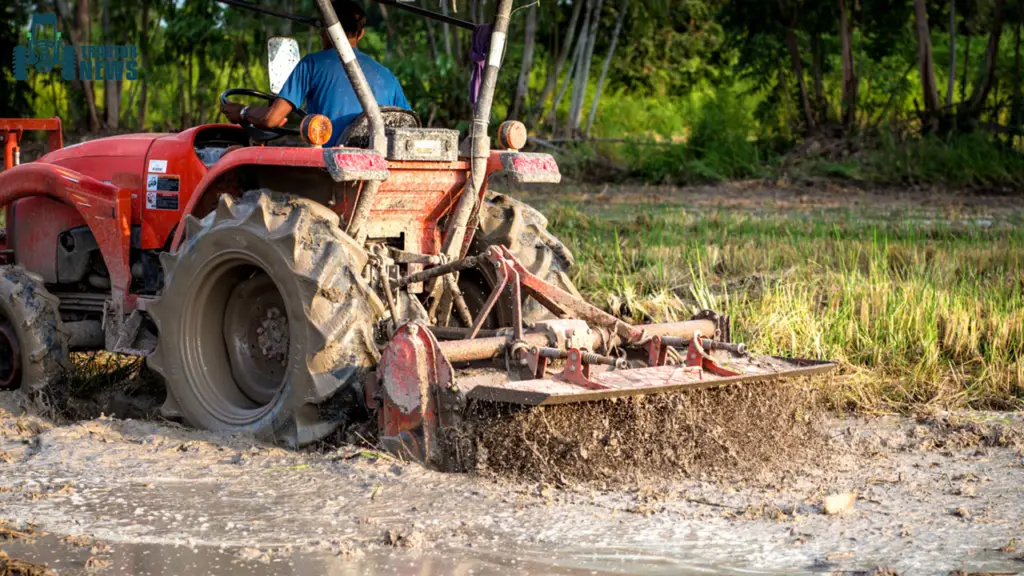
This image is property of t-news.b-cdn.net.
Maintaining the tiller
Proper maintenance of your rotary tiller is essential for its longevity and optimal performance. After each use, it’s important to clean the tiller thoroughly. Remove any soil or debris that may have accumulated on the tines or other parts of the tiller. This will prevent rust and ensure that the tiller is ready for the next use.
Regularly inspect the tines and sharpen or replace them as needed. Dull tines can diminish the efficiency of the tiller and make it harder to achieve a smooth and even till. Always follow the manufacturer’s instructions for sharpening or replacing the tines.
When the tilling season is over, it’s important to store the tiller in a dry and secure location. This will protect it from moisture and potential damage. Consider covering the tiller with a protective tarp or storing it in a shed or garage to ensure its longevity.
Dealing with common challenges
When using a rotary tiller, you may encounter some common challenges that can affect the health of your garden. One such challenge is weed growth. Tilling the soil can disturb weed seeds, causing them to germinate and compete with your desired plants. Regularly monitor your garden for weeds and promptly remove them to prevent them from taking over.
Another challenge is dealing with compacted soil. If your soil is compacted, it can be harder for the tiller to break up the ground and achieve a thorough till. Consider using aeration techniques or adding organic matter to improve soil structure and reduce compaction.
If you’re dealing with wet soil, it’s best to avoid tilling. Tilling wet soil can result in clumping and compacting, making it harder for plants to establish their roots. Wait until the soil has dried out to a workable consistency before tilling.
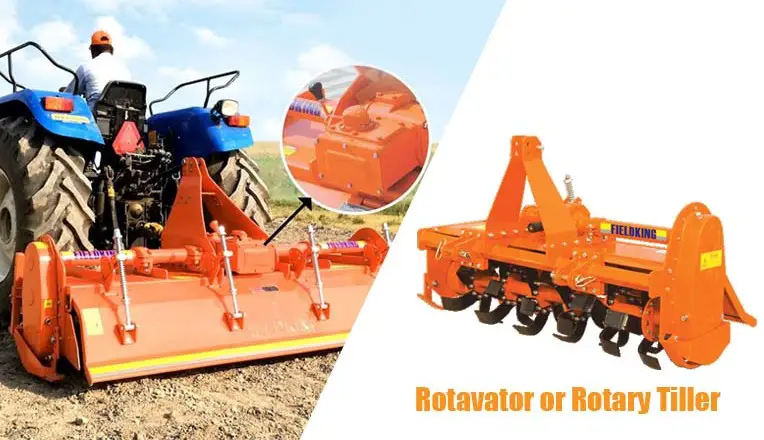
This image is property of www.fieldking.com.
Rotary tiller accessories
There are several accessories available for rotary tillers that can enhance their functionality. One popular accessory is a roller. A roller can be attached to the back of the tiller and helps to level and firm the soil after tilling. This can create a smoother surface for planting and improve overall soil structure.
Another accessory to consider is depth adjustment wheels. These wheels can be attached to the back of the tiller and allow for easy adjustment of the tine depth. This is especially useful if you have different areas of your garden that require varying tine depths.
If you want an added layer of protection, consider attaching a rear shield to your tiller. A rear shield can help prevent debris from being thrown towards the operator and provide an extra level of safety. This is particularly important if you’re tilling in a confined area or near structures.
Potential soil health concerns
When using a rotary tiller, it’s important to be mindful of potential soil health concerns. One concern is soil compaction. Tilling can disrupt the natural structure of the soil and lead to compaction. To avoid this, limit tilling to only when necessary and use techniques such as aeration to improve soil structure.
Soil erosion is another concern, especially in areas with steep slopes or loose soil. Tilling can loosen the soil and make it more susceptible to erosion. To prevent soil erosion, consider using ground covers or mulch to protect the soil and stabilize it.
It’s also important to monitor the soil pH. Tilling can change the pH of the soil, so regular testing is essential. If the pH is too acidic or alkaline, take steps to adjust it accordingly to ensure optimal plant growth.
In conclusion, using a rotary tiller can greatly improve the productivity and health of your garden. By choosing the right tiller, properly preparing your garden, prioritizing safety, and following best practices for operation, you can achieve consistently successful tilling results. Regular maintenance and careful consideration of common challenges and potential soil health concerns will help to ensure the longevity and overall wellbeing of your garden. Happy tilling!
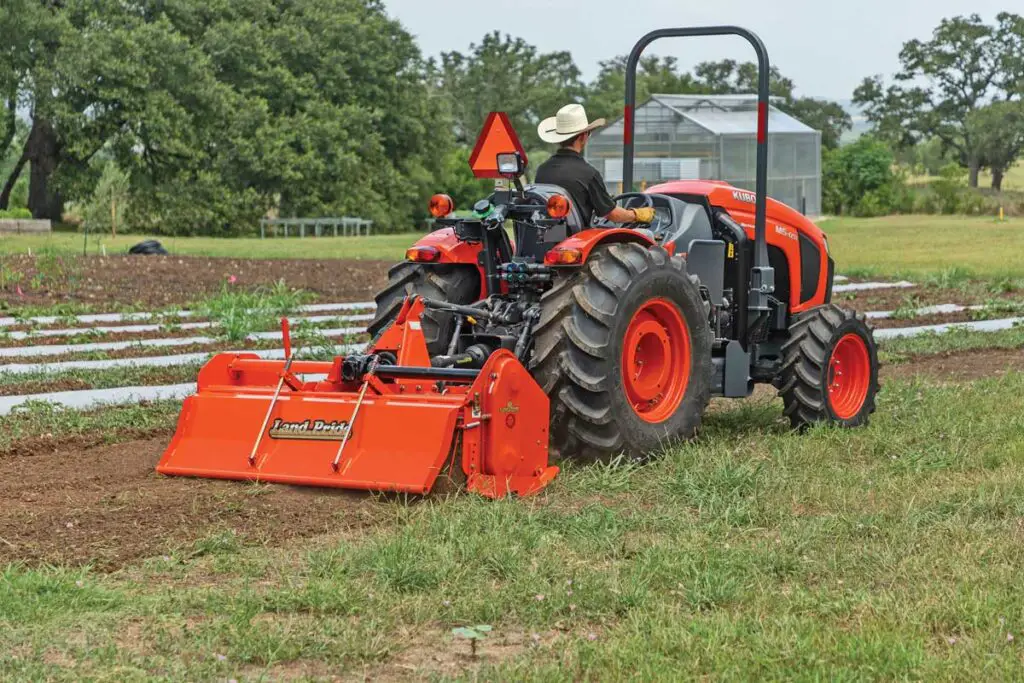
This image is property of compactequip.com.
This post may contain affiliate links which means I may receive a commission for purchases made through links. Learn more on my Private Policy page.

